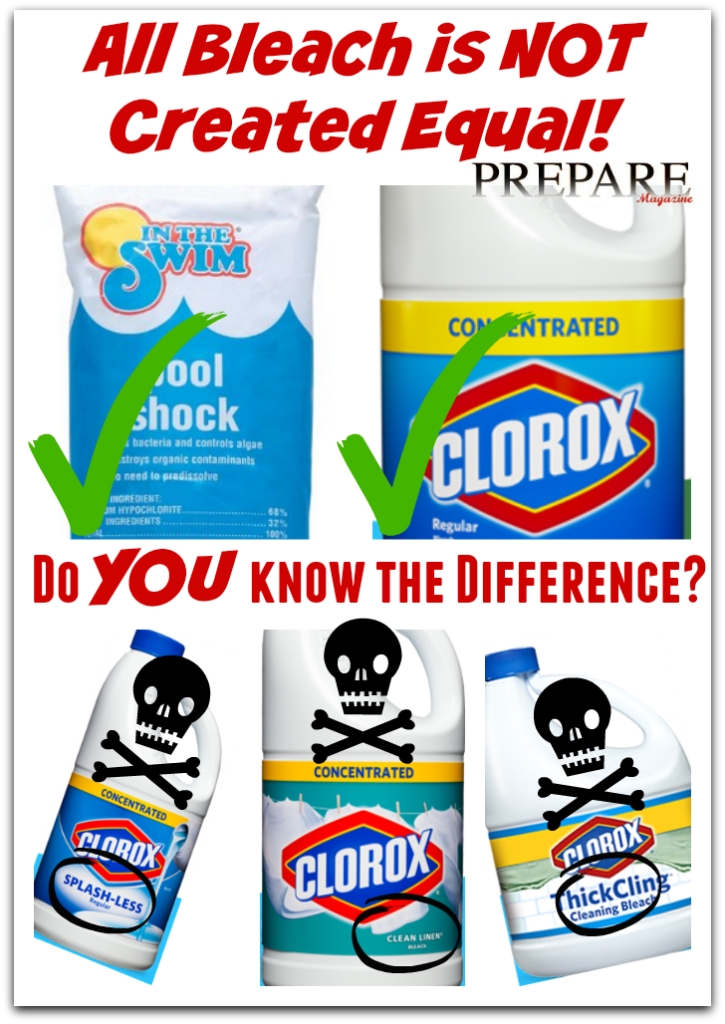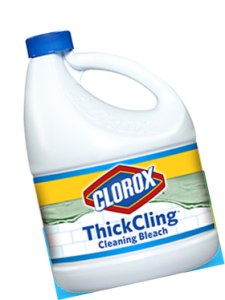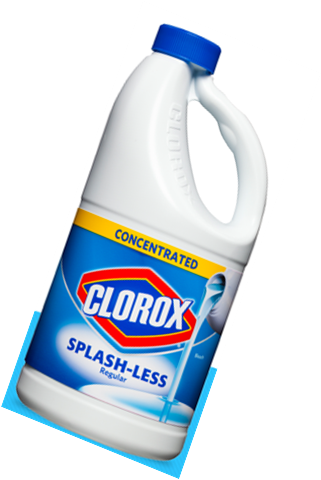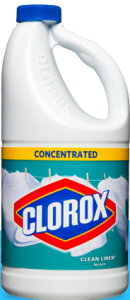 All Bleach is NOT Created Equal! Knowing exactly how to use bleach correctly can disinfect surfaces or purify water. Knowing which bleach contains harmful additives and chemicals and thus must be avoided – Can save your life!
All Bleach is NOT Created Equal! Knowing exactly how to use bleach correctly can disinfect surfaces or purify water. Knowing which bleach contains harmful additives and chemicals and thus must be avoided – Can save your life!
Recently at one of our area Preparedness Meetings we had the opportunity to learn from an active member of our group. Craig, is a Registered Nurse with a background in critical care and emergency leadership. He had recently completed updated training for infectious deceases and modern day epidemic mitigation (including new Ebola Protocols). Craig was so kind to share much of what he learned with our group. The topic of using bleach for disinfecting or purifying water has been widely spread throughout the preparedness community, however, Craig shared information that I’d not read mentioned much in detail. I found it very important and wanted to share this with readers of PREPARE Magazine.
All bleach is widely acceptable as an antimicrobial and can kill microbes on hard non-porous surfaces. Bleach seems to be the ‘go to’ disinfectant for everything from bathrooms to kitchens. In an emergency situation, it’s usually the often touted method for purifying water. For surfaces that may have become contaminated or with a contagious individual in the home, treating an area correctly can be life-saving. But only if it is preformed properly with the right bleach, in the correct ratio, full length of time and dried in the appropriate method.
[wpgfxm_contentbox width=”90%” bg_color=”#FAB900″ b_color=”#050C42″ style=”double” top=”2px” right=”none” bottom=”2px” left=”none” radius=”0px”]Want more Preparedness Tips? Get Your FREE Digital Subscription to PREPARE Magazine[/wpgfxm_contentbox]
What’s Wrong?
When it comes to bleach, you can’t just ‘grab a gallon’ and go. You really need to read the label carefully. “Regular” bleach is the ONLY kind you want for disinfecting surfaces or treating water, not any one of the other formulations. If there is anything other than the word “Regular” describing your bleach, relegate the use of it to laundry only. The thick cling, splash-less and scented varieties contain extremely harmful chemicals that actually can create as much harm as the untreated surface or water. 
 Splash-less bleach is not simply splash-less because the spout may be shaped differently, the manufacturer has added a soap/sudsing agent to change the viscosity of the liquid bleach, making it easier to pour. Thick -cling bleach contains more of it than it’s spill-less counter part. If you’ve ever used these you’ll notice a soapy film on the counter top surface or more suds in your washer. This is not only harmful if swallowed (see below the proper way to use the proper Regular Bleach) but also attribute to many asthma and respiratory issues as well.
Splash-less bleach is not simply splash-less because the spout may be shaped differently, the manufacturer has added a soap/sudsing agent to change the viscosity of the liquid bleach, making it easier to pour. Thick -cling bleach contains more of it than it’s spill-less counter part. If you’ve ever used these you’ll notice a soapy film on the counter top surface or more suds in your washer. This is not only harmful if swallowed (see below the proper way to use the proper Regular Bleach) but also attribute to many asthma and respiratory issues as well.
 Scented Bleach has become quite popular for laundering. While for some people they may not appear to pose a problem in the wash water, dyes or perfumes clearly have a negative impact when used on utensils, counter tops and in drinking water. Not only are they highly hazardous to our digestive systems, topically they have been proven to cause skin irritation and allergies, asthma and respiratory problems, developmental and reproductive toxicity and cancer. Again, if you see the proper method for disinfecting, you’ll see why the ingesting and topical reactions are important.
Scented Bleach has become quite popular for laundering. While for some people they may not appear to pose a problem in the wash water, dyes or perfumes clearly have a negative impact when used on utensils, counter tops and in drinking water. Not only are they highly hazardous to our digestive systems, topically they have been proven to cause skin irritation and allergies, asthma and respiratory problems, developmental and reproductive toxicity and cancer. Again, if you see the proper method for disinfecting, you’ll see why the ingesting and topical reactions are important.
[wpgfxm_contentbox width=”90%” bg_color=”FAB900″ b_color=”#050C42″ style=”double” top=”2px” right=”none” bottom=”2px” left=”none” radius=”0px”]Get Your FREE Digital Subscription to PREPARE Magazine. Get Ready for Almost Anything![/wpgfxm_contentbox]
What’s Right?
Proper Disinfecting Time & Technique:
Two (2) Teaspoons of Clorox Regular Bleach in a Gallon of water will kill germs – but ONLY if it has been in contact with the hard surface for 2 full minutes and then is allowed to air dry, without rinsing.
What’s Important?
Bleach, REGULAR bleach, is a widely used method of cleaning. It should be noted that this is not the only option for disinfecting, however, it is the most widely acceptable one provided you are well aware of which product you are using.
A few downfalls to even using regular bleach, however, are that all bleach is caustic, causes eye irritation, gastric burns, is corrosive to metals in high concentration or long exposure.
For long term storage, regular liquid bleach may not be the best option. In comparison, bleach is relatively unstable when compared to alcohol for prolonged shelf-life of a liquid disinfectant.
[wpgfxm_contentbox width=”90%” bg_color=”FAB900″ b_color=”#050C42″ style=”double” top=”2px” right=”none” bottom=”2px” left=”none” radius=”0px”] Are YOU Ready? Get Ready! Get Your FREE Digital Subscription to PREPARE Magazine[/wpgfxm_contentbox]
Please share so we can all help each other be better prepared! Thank you!







Thank you for this article. I had no idea.
You are so very welcome, Dawn.
Neither did I! I thought the spout was just different on the spill-less kind etc. Also, suggestion, don’t use anything other than ‘regular’ to clean out fountains or hot tubs… they suds the living daylights out of the interior tubes and the bubbles just don’t ever stop! :/ Not survival important, but a clue to how BAD that could be on the counter or in water! Eeeek!
Thanks for the comment!
Hi, is clinging bleach gel the same thing as concentrated bleach? Thank you!
It’s probably better to stick with the generic BLEACH. Chemically, there’s no difference and it costs a lot less!
Oh agreed Bill! Just make sure it’s the ‘regular’ too – since even generics are putting out thick, cling and scented. Great point! Thank you for the reminder. 🙂
Generic bargain bleach is only half as strong as regular Clorox, so need to double amount used.
Curious… I bought tablets that you dissolve in water which makes bleach. Could I still use a few drops to sanitize drinking water safely? As for ingredients, the label says: 1.7g NaDCC and they’re called “SoChlor Tablets”
Brandy, are you saying that the tablets make a gallon of actual BLEACH when dissolved?
I bought these tablets as well to add to 1 gallon of water to make 1 gallon of bleach. How does this compare?
Without knowing the exact tablet and instructions, what it SOUNDS LIKE is that they are ultra-concentrated (if a tablet added to water will make one gallon of a chlorine bleach equivalent). If that is the case (a tablet makes a gallon of bleach) I would suggest making the bleach first then using it AS the bleach in water by the amount recommended for actual bleach added to water for sanitation. I would NOT suggest using the tablet directly into water you intend to consume.
The tablets I bought said not to count on sanitizing quality. Basically for smell only. 😵😬
Thanks! Very informing. I would add, bleach’s shelf life isn’t good. I purchase drinking water tablets. They make bleach and have decades shelf life.
Bleach does have a shorter shelf-life (up to a year and perhaps a few months more) than powder or pool shock (indefinite shelf life) but that’s a different article altogether. The tablets are a compact option that is very suitable for most needs as well. Thanks for the comment.
How about the “concentrated” bleach? How many drops per gallon for disinfecting water? Also, what is the expected shelf life for bleach these days?
If I am not mistaken, James, concentrated bleach also has an additive that renders it unsafe for using to disinfect drinking water. Bleach does have a shorter shelf-life (up to a year and perhaps a few months more) than powder or pool shock (indefinite shelf life) but that’s a different article.
This is very interesting especially because I’ve been in “bleach research” mode. Here’s what I found:
For more than 40 years I’ve used only Chlorox regular; however, after some coaxing by a friend, I began using generic brands. I used the generics for about 2-3 years. But last week I picked up the generic, placed it in my shopping cart and headed for the check out. As I stood in line I began to read the label and I was shocked to realize that it did not say that it kills 99.9% germs. So, I went back to the bleach isle where i realized that Chlorox is the ONLY brand that states this. So I bought the Chlorox to be safe. When i got home i washed my several loads of whites only to realize that over the past 2-3 years my whites had actually become VERY dingy. From here on out, it’s only Chlorox for me.
What is the difference between the bleach that says kills 99.9 % germs and bacteria and ones that don’t have that written on the label?
Good question!
All bleach does kill germs.
The purest (not concentrated, not low splash, not scented) is the most potent – however even the purest bleach can only claim the 99.9% rating just because of the off chance a germ gets through (too diluted by user, missed a spot in clean up, etc)
As to the label, it is up the the manufacturer. There is a potential (although mostly an opinion or conjecture) that if it is not listed as 99.9% germ killing capability on the label that the bleach is not at full strength or pure. So I’d say it ‘MAY’ not be as potent.
Bleach is a relatively inexpensive and highly effective disinfectant. It not only cleans up dirt and mold, but also kills some of the most dangerous bacteria, including staphylococcus, streptococcus, E. coli and salmonella – as well as viruses like the flu and the common cold.
But you are wise to find the simplest form of full strength, unscented bleach that claims 99.9% just to have the best chance of effectiveness.
Thanks for sharing this, I had just got the wrong bleach.
Make sure to check the entire label! Just because it says “regular” doesn’t mean it will disinfect or kill germs!! I just bought “regular” bleach but the back of the label states it will not do either of these things. According to the Clorox site, if the bottle does not say “kills germs” then it is no going to happen.
Me too! I bought off-brand regular and learned this the hard way. :/
There is an interesting blog “Pecan Corner Blogspot” that explains that the formula for bleach was changed due to EPA regulations, but Clorox and the other manufacturers have never bothered to explain this. They just keep trying to sell the story that the new “concentrated” formula is new and improved – but those of us who remember the original bleach already knew that this stuff is not any good – it just won’t remove stains and whiten whites like the old product did. I was glad to find the blog so I could quit wasting my time and money trying to get the new clorox to work like the old clorox did. (I kept assuming I was getting an old bottle, or something…..) And I have learned here that the new formulas additives are not a good choice for sterilizing water. So apparently, the new concentrated bleaches are good for…..nothing! And the old bleach is no longer available in the U.S. Good luck, everybody…..
I just noticed the bleaches I buy won’t kill the mold and dissolve hair on drain stoppers I let soak for a couple days. I went out and bought more bottles. When I smell them they don’t have the caustic bleach smell. Smells like water with a vague touch of bleach. So i suspected to keep up on demand they were watering down the product. But sounds like the EPA made real bleach illegal? I can not find bleach like what could be purchased three years ago.
Just this weekend, my husband accidentally bought the splash less Clorox thinking it was the regular formula and poured in it our well to get rid of coliform bacteria. This is the second day and we are shaking in our boots thinking that we have contaminated our well Help!! Foam is coming out of the hot water faucets, but not the cold, probably because hot water is more conducive to suds. It is Sunday and no one to call about this.
I know it is late but to any later readers, this is not a great idea since Splashless usually contains Lye. Likely the 99.9% can only be claimed with those bleaches registered with the EPA. EPA registration can cost a million bux based on what testing they require to certify it to killing 99.9. The thing to note is plain bleach is plain bleach assuming it doesnt have additives(like splashless) and is at the same concentration as the name brands.
Something about the rod in the water heater reacting with the water somehow. All I know is we have to shock our well every few months, and the hot water is always more affected by the bacteria
I ‘ve always used a little Bleach in my Dish water when washing my dishes. I was told it was to make sure they got disinfected. What do you recommend?
I am not an expert by any means, but I use vinegar in my dish water because I feel it is better and safer than bleach (and doesn’t discolor my clothing). I also think the effectiveness of soap is just fine by itself.
I always use bleach when washing dishes.
What’s the difference between unscented bleach and regular bleach? I was thinking they were the same, just without the added scented chemicals. But, my mom insists that’s not true – that unscented bleach has NO odor whatsoever. Frankly, I don’t see how that’s possible unless she’s talking about oxygen bleach, which is a whole different thing.
A letter I wrote today, from the Canadian consumer product perspective…
FYI, the bleach I refer to was generic, No-Name bleach…
————————————————————————
Attention: Public Health Inspector XXXX & others,
I took my FoodSafe Level 1 two years ago from XXXX (didn’t catch last name) and the training continues to be a very practical reference for me, even in general life.
However, it is the current Covid-19 issue that today provoked an observation & a suggestion for the Health Region’s public education branch…
I went to bleach some laundry and discovered the bleach was labelled “Not intended for Household Cleaning”. (It did not list chemical composition nor strength.) It seemed intended instead just for laundry?? I was taken by surprise.
I had been relying on it as part of my basic household kitchen/bathroom cleaning & sanitizing regime (in addition to occasional laundry use). I had no idea that typical consumer bleach products actually run the gamut from “Laundry” to “Multi-purpose” to “Ultra Disinfectant” *.
If this doesn’t make a huge difference in average residential circumstances, then feel free to move on to higher priority issues no doubt on your plate.
But if consumers are bleaching surfaces with the idea and confidence that germs are effectively being killed, while that being actually highly dependant on the bleach product used, then I can vouch that is not common knowledge within our region’s population…
Perhaps a specific type & concentration need to be noted wherever surface disinfecting with bleach is recommended in the health region’s public education files?? (Not only Covid-19 but Norovirus, Hantavirus, etc.)
Just a thought from an average health-conscious resident in these times of heightened concern. Within my circles, I try to promote a culture of public health safety, just as my Instructor XXXX encouraged us to do!
Sincerely,
YYYY
——————————————————
The CDC lists bleach with at least 5.25% socdium hypochlorite as a disinfectant.
Am I correct in understanding that any brand, as long as it’s regular beach, will disinfects and can be used in water?
I have a similar question. I bought no-name “Bleach / Eau de Javal” and for laundry it says 1 cup per load. However also on the label it says “not for household cleaning”. So what is laundry bleach?
I mixed according to a recipe I found on line for household cleaning, converted to metric, it’s 4 ml bleach per 200 ml water which I bring in a small container to wet a paper towel and wipe down the handles of the shopping buggies at the grocery store. The diluted bleach solution has very little smell of bleach. So wondering if the concentration of this laundry bleach is different from other bleach intended for household cleaning?
I am not sure that the all the information above is valid. I appreciate the suggestion that using “regular” household bleach with *no additives is acceptable for disinfecting non-porous surfaces. However, I question whether bleach labeled as “Regular” exists, or should be trusted. Advertising, and changes to yesterday’s trusted products is way too common place today to be trusted. Disinfecting non-porous surfaces must be done properly as noted in this article and tagged as “Proper Disinfecting Time & Technique”. I note that there is *no information of the proper use of Bleach to disinfect drinking water. Taking into account the treat of the current virus responsible for Convid-19, the mention of simple *water disinfection procedures with bleach should *not have been omitted.
I became curious about bleaches when I read the label on the cheap bleach form the discount store and compared it to Clorox.
Discount bleach required one full cup for a normal load, whereas Clorox required only one half cup for the same load.
Then I searched for the strength of two brands.
Clorox contains 8.25% sodium hypochlorite
Purex contains 2.75% sodium hypochlorite.
This is another reason to read the labels carefully.
Other brands may vary just as much or more.
At this scary time in our country bleach is hard to come by but I did find a bottle of bleach concentrate..I hoping you can just use less for all laundry and cleaning all surfaces….
What is the difference in a bottle marked “cleaning bleach” and Clorox? There is no mention on the bottle of any disinfecting properties (which is, of course, what I bought it for..!)
Can someone PLEASE explain the difference between regular bleach and germicidal bleach? I use regular bleach in my water system for my home, but now I can only find “germicidal” bleach. Is this still safe to use in our water system? Thank you, in advance, for your help.
I could find only CONCENTRATED bleach (8.25%). How much is needed for a GALLON of water to be used to disinfect surfaces? (REGULAR bleach (5.25%) mixture is 1/3rd cup to one gallon of water.)
“Concentrated bleach is an 8.25 percent solution of sodium hypochlorite, up from the regular, traditional bleach concentration of 5.25 percent. For moms, this means adding less bleach to water for laundry or household disinfection.”
I could find only CONCENTRATED bleach (8.25%). How much is needed for a GALLON of water to be used to disinfect surfaces? (REGULAR bleach (5.25%) mixture is 1/3rd cup to one gallon of water.)
Concentrated bleach is an 8.25 percent solution of sodium hypochlorite, up from the regular, traditional bleach concentration of 5.25 percent. For moms, this means adding LESS bleach to water for laundry or household disinfection.
I kept diggin on the internet, and I believe i answered my own question here:
https://www.canr.msu.edu/news/covid-19-disinfecting-with-bleach
5.25% REGULAR bleach – 1/3rd cup to 1 gallon water
8.25% CONCENTRATED bleach – 1/4th cup to 1 gallon water
I have clorox bleach crystals, but I cannot find the ratio of crystals to water in order to make the equivalent of regular liquid clorox bleach. Does anyone know?
it should be on the bottle? My bottle of Clorox bleach crystals says for laundry add 3 Tablespoons (T); for toilets 1.5 T; and for sinks and porous surfaces use 2 T. per gallon of water – but nowhere does it say this kills germs or sanitizes. It does say to leave on hard surfaces for 10 minutes, BUT if those hard surfaces are sinks/counters where food is prepared, you must RINSE with clean water and air dry! It sounds like this would not be suitable for sterilizing water in an emergency preparedness scenario. As I mentioned above, ALL bleach in the US is a different formula than it was years ago, as mandated by the EPA; the “concentrated formula” is misleading as the plain old bleach we used to have worked DRAMATICALLY BETTER than this new stuff at whitening, stain removal, etc.
I am so confused about different types of bleach.I have the splash less Bleach. On the label it says ” Not for sanitation or disinfection.To sanitize and disinfect, use Clorox Disinfecting bleach.
How does this bleach not sanitatize ??
Hello,
I’ve been researching the issue of using bleach in treating well water for drinking water for a long time. And this is what I found: The only bleach you should use is bleach that has been certified and meets the NSF/ANSI standards for drinking water. You would have this info available on the bleach container with the NSF logo. I initially was using a generic grocery store brand and switched to a brand that has been certified. Clorox used to have the NSF certification for drinking water but no longer. I believe, although not sure, their products are not for drinking water except in emergency situations. If you are using large quantities of drinking water, then the best gauge of the proper amount of bleach to disinfect is using an electronic gauge – the colorized charts are not very accurate. The range of chlorine should be withing 0.25 to 1.0 PPM, and this is what the gauge is used for. Some recommend using pool bleach which is a higher concentration and does have the NSF certification (required for Florida) but may have other additives due to sun exposure, etc. I have used pool bleach too. The only two products that I’m aware of that has the NSF certification is Pure Bright Germicidal Ultra Bleach and AROCEP Ultra Bleach. Personally, I would prefer using Clorox because I’ve found that the two bleaches mentioned clogs my mixture injector every month or so – the injector is placed into the water line. My neighbor uses Clorox with Cloromax, has the identical injection system as me and he never has an issue with his injector getting clogged. Of course, he doesn’t drink his water like we do. As one bleach manufacturer explained to me, Clorox has been around for a very long time and have their act together. If my carbon filter would filter out the Cloromax, that’s the product I would use but I read that the carbon only filters organic material. BTW, achieving the active chlorine range of .25 to 1.0 PPM is dependent upon the water you are using as some water may require a higher concentration of bleach or less. My well water varies and I have to make adjustments to the bleach or water to remain in that range. So a blanket statement of 1 gallon of bleach to so many gallons of water would not be accurate. Just to provide an idea and an average, I use approx. 1 gallon of 6% bleach (sodium hypochlorite) to about 5 gallons of water – then the injector uses approx. 3 oz. of that mixture to each gallon of untreated water. The bleach not only kills the bacteria but reduces iron, magnesium, sulfur odor, etc. If anybody has any other suggestions about other bleaches, please let me know. Or if you have any questions that I am able to answer, I’ll tell you what I’ve learned. Lastly, when I contacted Clorox they confirmed that their products have not been NSF certified for several years, and that is a shame.
I am in the exact same boat as you, George and am constantly looking for NSF certified chlorine for our well water that has the same issues as yours!
I use bleach injected into well water to kill bacteria, dissolve iron and remove the rotten odor from sulfur. Since we also drink the water, after the bleach purifies the water, the water passes through a carbon filter that removes the chlorine, then a water softener to remove minerals. Chlorox was the go-to brand and Chlorox also had the NSF symbol on the bottle for use with drinking water. However, Chlorox no longer has any products used for drinking water. The Chlorox on the store shelves now includes Chloromax which is a chemical used in the cleaning process, a reason I would not use that type of Chlorox. However, Chlorox does make other bleaches for germicidal use – go to their site and you’ll see some with and without Chloromax. I have been using Pure Bright bleach which is a germicidal bleach supposedly used in hospitals, as well as a similar product. I have also used pool bleach which has the NSF certification for drinking but stopped using it due to the potential for the addition of additives since it’s exposed to sunlight. One bleach manufacturer told me that not all bleaches are equal. This is definitely true. He also said that Chlorox has bleach perfected since they have been making it for such a long time. Percentages vary from around 6% to over 10% for pool bleach. When I use the 6% bleach, I mix 1 gallon of bleach to 5 gallons of water. After the mixture sits in a tank for about 10-20 minutes, I test the active bleach since the active bleach when first added has a much higher concentration – the bacteria and other items decreases the bleach’s potency. I then test the active bleach in the tank with an electronic tester to try and attain a reading of 0.04 to 1.0 PPM (parts per million) of active chlorine. Bleach degrades fast, within a month or two, and I have to increase the concentration a tad to remain within the tolerance. Too high of a concentration is not good for the carbon filter and too low is not good as you may be letting bacteria into your faucets and water heater. I may start to use a Chlorox brand that does not have Chloromax, a germicidal type, even though it is not listed with the NSF symbol. Chlorox tells me that none of their products are NSF listed, but some companies don’t want the expense with the process of having their products listed with NSF. I’m willing to try the Chlorox without the Chloromax because it appears to be a more purified bleach and will not affect my injector as much from clogging as does other less expensive bleachs. Maybe Chlorox uses soft water vs. hard water in the process, I don’t know. But what I do know is that my neighbor has the same system as mine and his injector never gets clogged – he uses regular Chlorox with Chloromax since he doesn’t drink the water. So I’ll see how it works as my injector needs cleaning once each month.
I have not been able to find 8.25% (only 6%) NaCIO bleach of any brand, for sale in my area for a couple years now, I believe this is a public health issue that should be addressed by all liquid bleach manufacturers!
I do use disinfecting wipes, observing label directions carefully to ensure the surface I’m working in remains wet for the recommended time.
What can I use to sterilize water containers that will hold my baby’s water in it for bottles? What ratio and will Clorox bleach be ok to use?
Is the Clorox disinfecting bleach ok to use?
It is my understanding that regular Clorox bleach has about 8% concentration, but bargain brands are half that, so need to use more. Taught to stick with Clorox for use in butterfly lab work.
I feel like even the splash less bleach must be useful for disinfection. Maybe not safe for drinking water but this whole hubbub is kinda funny. Also respectfully, your writing in the post had a lot of redundancies where you repeated the same word twice or used two words that meant the same thing in the same sentence.